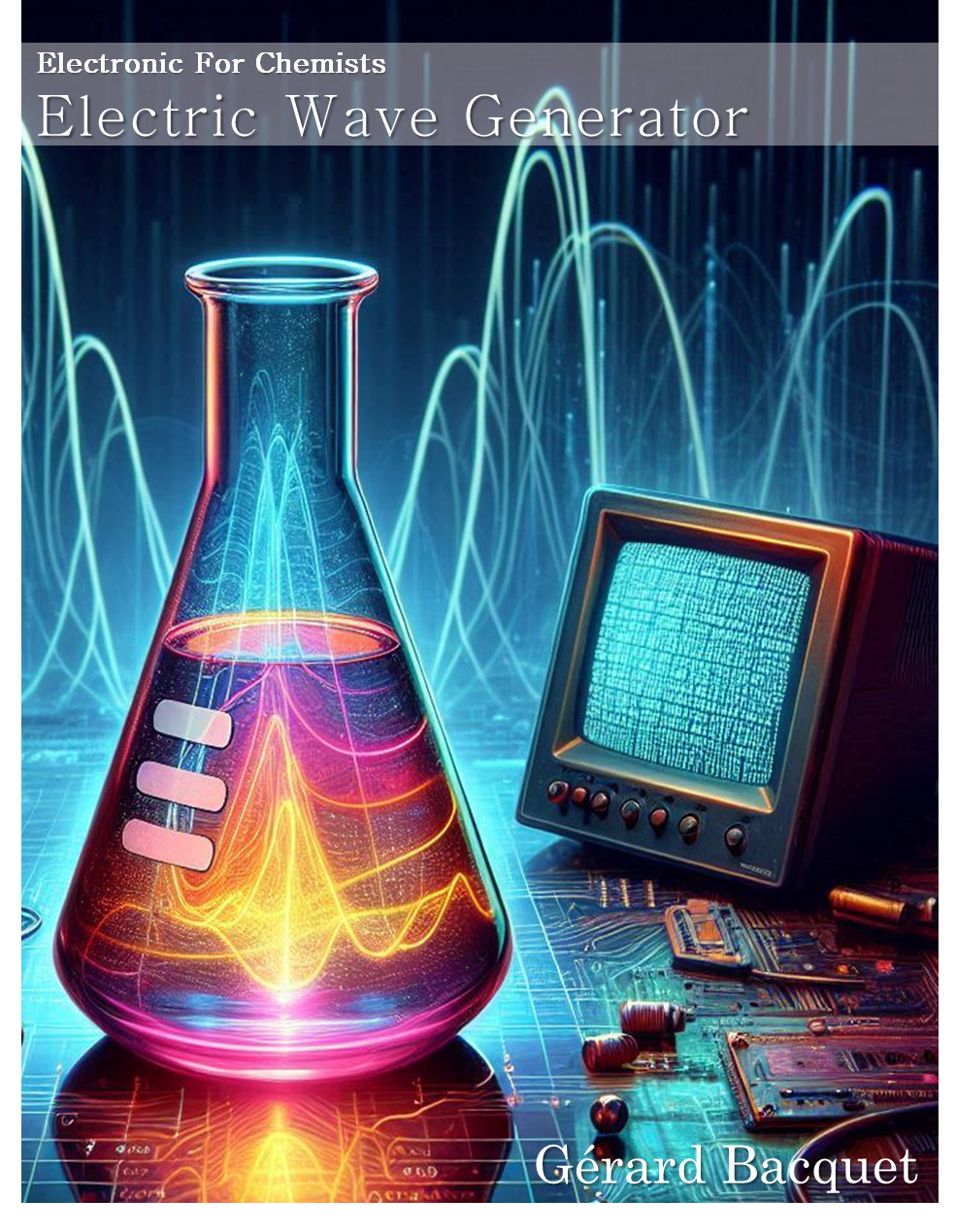
Electronic for Chemists - Wave Generator
This book is the fourth in a series of publications aimed at introducing chemists and physicists to the design of laboratory equipment in order to create an autonomous and low-cost "ChemLab". Beyond the economic reason, the main purpose of this project is to serve as an educational support, to initiate a frugal approach to innovation (consumption of less energy or renewable energy sources) and finally to promote the reuse of obsolete components or objects.
In a number of different domains, there is a need to generate reliable signals in a variety of forms and at different intensities, across a wide range of frequencies, from a few hertz to over one thousand hertz. Although there are already devices that are capable of generating such waves, they are expensive and have limited versatility, which makes them unsuitable for use in research investigations. Furthermore, these devices are constrained to a limited range of waveforms, including sine, square, and triangle, and none of the existing devices are capable of simulating, on demand, physiological signals observed in animals or humans. We propose the development of a versatile wave generator at a cost of a few euros.
This book is then dedicated to the generation of waves and introduces the fundamentals of signal management in chemistry and physics. It covers a range of waveforms, including square, sine, triangle, sawtooth, logarithm, and exponential signals. Additionally, it addresses the application of signal management in human physiology investigations, with a focus on electrocardiograms (ECGs), finger ECGs, phonocardiograms, intra-aortic balloon pressure, human respiration, electro retinograms, and other relevant topics. From a pedagogical standpoint, the book covers the fundamentals of signal communication, the conversion of analog to digital information, the application of low-pass filters and Fourier transforms, the basics of PWM pins, and the management of Arduino frequencies.
Let's not forget that we cannot expect a chemist to become an expert in electronics and data processing ... However, we can educate him or her in the simple and basic principles. We invite chemists to participate in the open source movements to enrich himself and the community of "hackers" and "doers". In this sense, this 4th book has been written in the hope that readers will fill in the missing pages!

